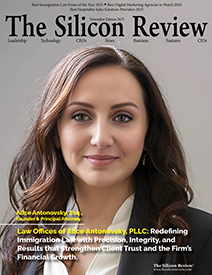Opala – Connecting Data Flow across Healthcare to Optimize Patient's Experience
The Silicon Review
![]()
Automation in healthcare suggests making the use of distinct software that heightens efficiency in various elements of medical services. This advocates making use of modern techniques and tools for the reasons of productivity as well as capability. The healthcare industry is being redefined with the use of automation by unlocking efficiencies that would not be attainable with manual operations. Healthcare leaders already know that automation works. According to healthcare industry research organization CAQH, the industry has reduced administrative costs by $122 billion as a result of automation and could save an additional $16 billion by fully automating some common tasks. Implementing automation in healthcare will likely be the first responsibility of new healthcare administrators as they are tasked with lowering costs, improving care quality, and using data analysis to support decision-making.
Opala is one such data automation partner that makes payer-provider collaboration radically easy. Opala's team comes from payer and provider organizations. This means they better understand your business and your customer needs. The company does more than digitize records – they unlock the value of your data and turn it into a strategic asset. Opala assumes that any developer working with the Patient Access API is familiar with the HL7 FHIR Release 4 specification. If a developer is not familiar with FHIR Release 4, or needs to look up something pertaining to a resource, each topic in the documentation set for the Opala API contains links to the relevant sections of the FHIR specification.
Patient Access API
Opala’s Developer Portal is where you can begin using Opala’s Patient Access API. This API enables you to access medical record (EMR) data for patients/members. Opala’s Patient Access API enables third-party app developers to create applications that can be used by patients and healthcare organizations to access meaningful medical data. The Opala API follows the SMART App Launch Framework for the HL7 FHIR Release 4 specification. It supports HL7 FHIR, DaVinci (PDex), and CARIN for Blue Button®. It also provides a robust Master Patient Index, OAuth 2.0 security, a cloud-based data repository, and access to FHIR-based resources.
Payer-to-Payer Data Exchange
This feature enables a member to initiate the transfer of healthcare information from a previous payer to their current payer. The member enters their information on Opala's white-labeled Health Data Transfer page, then logs into their account with the previous payer. For a payer's data to be available for members to transfer, the payer must be registered with Opala. If a payer is not registered, the member can request registration from this page. The Provider Directory is a publicly accessible API that does not require any registration or authorization to access. It conforms to the HL7 FHIR Da Vinci PDex Plan Net IG.
Data Hub
Payers save money and reduce administrative waste, creating less friction with providers. Their solutions satisfy current and upcoming federal compliance mandates. Providers don’t need to waste time getting crucial data from patients, giving them the opportunity to do what they do best - provide the best care possible for their patients. Digital Solutions Vendors can leverage the Opala Data Hub to power their applications, with permission of the patient. Their APIs are “socketed access” that can prepopulate an app with the info a patient would need to self-report. The member eligibility and value-based contract patient lists are updated continuously and available in a standardized format supporting automation across providers and payers. It offers health plan clinical review requirements, coverage decision status, and details about decisions available in a standardized format supporting automation across providers and payers.
The Leader Upfront
Ken Chandler is the Chief Executive Officer of Opala. He is a strategic healthcare leader with over 20 years of experience in health care operations. Prior to Opala, Ken was with Premera Blue Cross, most recently serving as senior vice president of National Accounts. In that role, he was responsible for an $8.9 billion business portfolio representing Premera’s largest, high profile, complex, and sophisticated employer clients. During this time, Chandler also served as Chairman of the Consortium of Health Plans Board of Directors and drove product solutions aimed at improving access to care and health innovations. He also served in a secondary role as CEO of Vivacity, a Premera-owned wellness company. Earlier in his career at Premera, Chandler served as vice president of National Account Operations and vice president of Operations for LifeWise Health Plan of Oregon, a Premera-owned company.

_2025-12-15_12-44-58.webp)

_2025-11-17_06-38-14.webp)

 (1)_2025-10-21_13-35-14.webp)